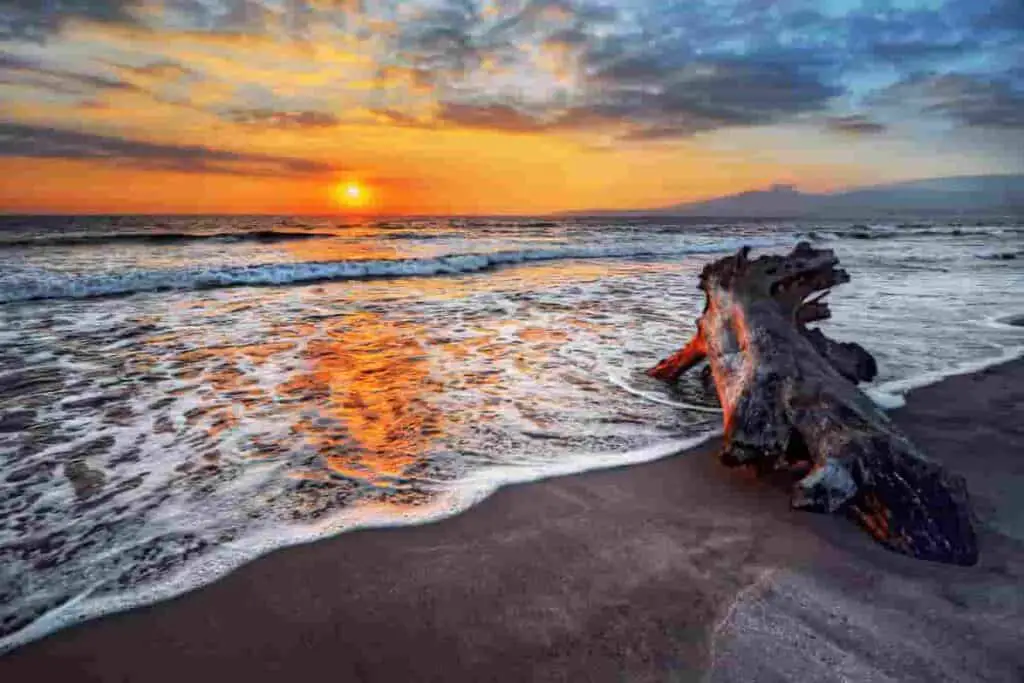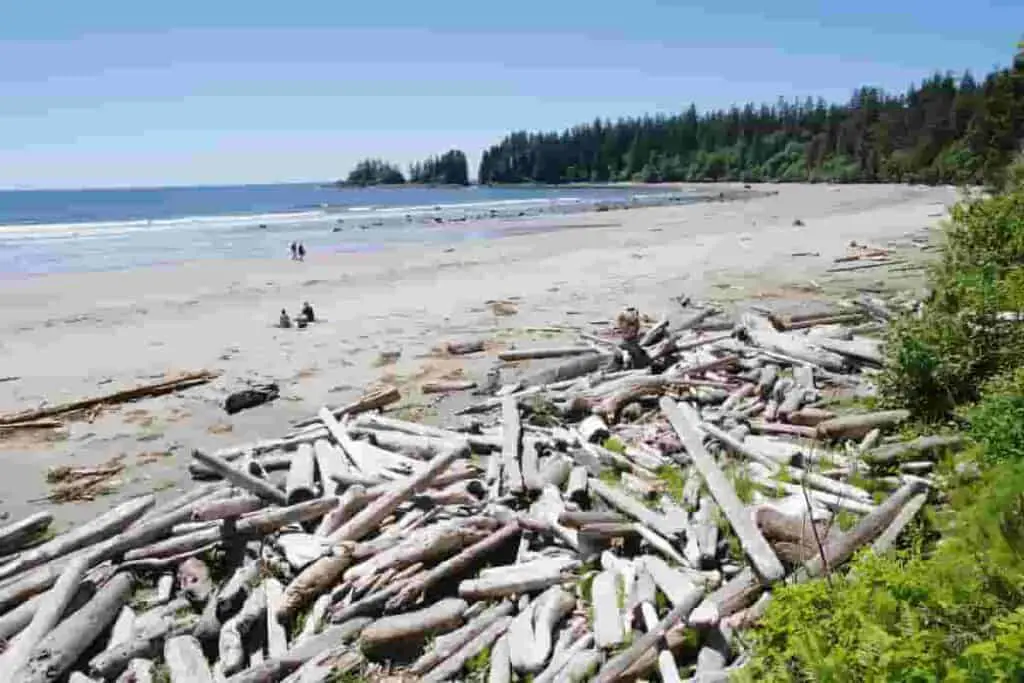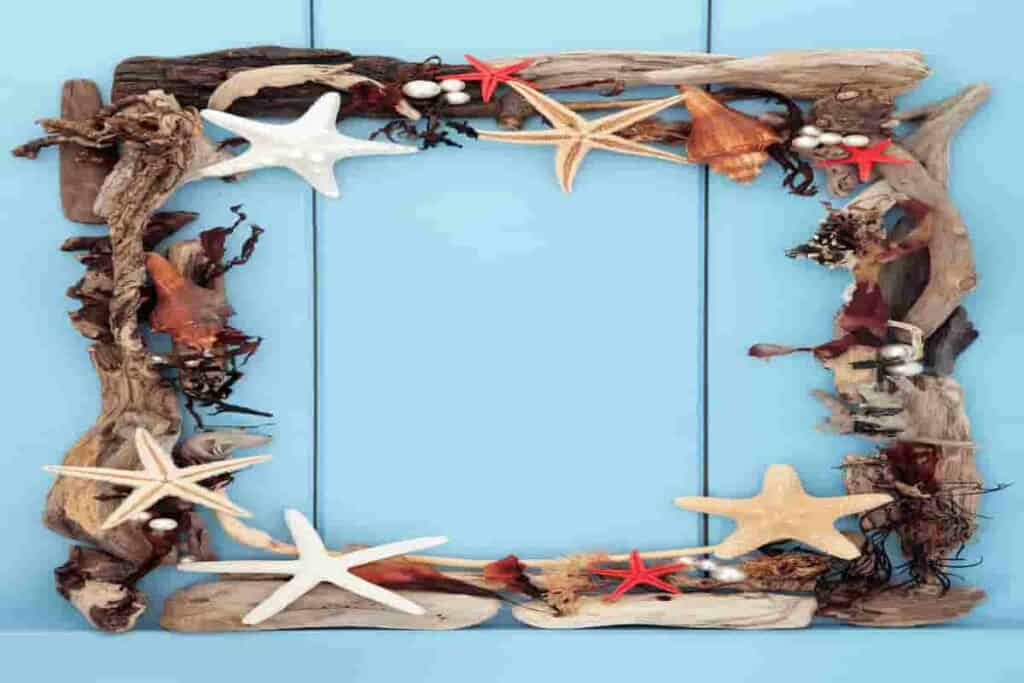Driftwood can be found at beaches around the world, especially near the shoreline. It’s wood washed ashore after being carried by currents or waves. Often it is used for landscaping, and it makes a great addition to your garden if you live near the ocean. If you are lucky enough to find driftwood and have an artistic streak in you, you may wonder – can you take driftwood from the beach?

Can You Take Driftwood From The Beach?
Yes, if you get permission from the owner of a private beach. For State or government-owned beaches, it is usually not allowed. You need to check with your state laws for its beaches before doing so. If you live in a place that allows you to collect driftwood, you should go ahead, grab it, and enjoy.
As a natural material, driftwood can create beautiful works of art. It’s common to collect driftwood from the beach and shape it into different forms and sizes. However, before you start collecting driftwood, it’s best first to understand the rules and regulations regarding the collection of driftwood from the beaches.
The first thing you need to consider is whether you can legally take driftwood from the beaches or not. The government manages most beaches, and the beaches’ laws vary from State to State. To better understand the laws, you can contact the local authorities. (Source)
Driftwood, a charming form of marine debris, adorns our public beaches, contributing to the natural ornamentation. The question of whether you can take driftwood from the beach, poses a multi-faceted issue concerning law, state jurisdictions, and nature preservation.
Regulations, managed by entities such as the National Parks Service and Department of Natural Resources, outline the boundaries of human interaction with this public property. These regulations aim to prevent harm to the environment and maintain the fragile balance between sand and sea.
Table of Contents
Beyond the aesthetic appeal, removing driftwood can disrupt the marine life ecosystem and accelerate coastal erosion. Driftwood serves as a vital natural resource for various marine species, and its absence could lead to unanticipated consequences.
Government bodies, including the Environmental Protection Agency, Coast Guard, and State Park Authorities, enforce stringent rules on driftwood removal. These rules, part of a broader strategy of coastal management, ensure that our actions do not have a harmful environmental impact.
Therefore, while driftwood collection might seem like a harmless act of personal liberty, it resides at the intersection of a more significant network, made up of legal frameworks, public property regulations, and environmental preservation efforts.
If you plan to take driftwood from a private beach, it’s best to ask the landowner for permission first. If the landowner allows you to take driftwood, it’s safe to assume that you can take it. However, if the landowner doesn’t allow you to take driftwood from his property, you may end up getting arrested.
In this article, I’ll explain how to collect driftwood from the beach, clean it, and some of the things you can do with driftwood.
I’ll also look at a scenario profile of Judy and Ben – what choices they would make for their coastal home using driftwood.
Keep on reading!
What Is the Driftwood Rule? Some Guidelines on Driftwood
The driftwood rule is a legal principle in the United States that looks at whether you can take anything from public waters. Courts have said that you can take driftwood from public waters, and so the rule is generally used as a baseline for property rights in this context.
Whether you can take driftwood off the beach is a property rights issue. If the beach is publically owned, permission needs to come from the public (State or government authorities); if privately owned, then from private beach owners.
Is It Legal to Take Driftwood Off the Beach
As mentioned previously, no, it is not legal to take driftwood off the beach if State rules forbid it. Driftwood can only be taken from a public shoreline if allowed by the State authority or if private beach owners permit you.

Is Driftwood Hard to Find?
Driftwood is found at the edges of lakes, rivers, beaches, and mangroves. It can be transported by wind or water currents to new areas where it settles on the bottom. Driftwood has been used for many purposes, including construction materials, fuel, and as a source of lumber.
The woody debris (driftwood) accumulates in coastal zones, including beaches, estuaries, and marshes. This term refers to trees and branches washed ashore by storms or other causes. Driftwood is usually composed of deciduous tree trunks, limbs, and roots. Dead coniferous trees and shrubs are also occasionally present. (Source)
Driftwood can be difficult to transport because it is heavy and bulky. It also tends to split or crack, making it more susceptible to damage during transportation. Large pieces of driftwood tend to sink into mud or sand, making them less visible and accessible.
Some Pointers for Finding a Useful Piece of Driftwood
Driftwood is a common sight at beaches around the world. It’s found everywhere, from the tropics to the arctic regions. Driftwood is usually made of wood that washes ashore during storms and hurricanes.
Sometimes, it’s just left behind by the waves. It’s a good thing that you can turn driftwood into something beautiful. Whether you want to create a unique piece of artwork or enjoy the natural beauty of driftwood, you need to consider certain factors before starting to process it.
The first factor you must consider is the type of driftwood you want to use. Different types of driftwood have different shapes and sizes. Some driftwood may be very large, while others are small. You need to determine which type of driftwood you’d like to use.

Another factor you need to consider is the color of the driftwood. You can get driftwood in various shades of browns, greens, blues, reds, yellows, oranges, whites, and blacks. It would help if you determined what color you prefer.
Before processing driftwood, the last factor you need to consider is its original shape. Some driftwood is round, while other pieces are flat. It would be best if you determined the shape you prefer.
Once you’ve determined the type of driftwood, the size, and the color you want, you can start processing it. There are several ways you can go about processing driftwood. You can either dry it out, soak it in water, or both.
* Drying driftwood involves leaving it outside in the sun. It will allow the wood to dry out completely. Once dried, you can sand off the outer layer of the wood. Then, you can apply a coat of stain to give it a nice finish.
* Soaking driftwood involves submerging it in water. After letting it sit in the water for a few days, you can remove it from the water and let it dry.
Both methods can be used together. You can leave the driftwood in the sun for a day or two and then submerge it in water. The advantage of doing this is that you can get rid of unwanted debris such as barnacles and algae.

What To Do With Driftwood? Why Some People Collect it
Driftwood is used in many different ways. Decorative pieces can be made of it, or they can also be carved into different shapes and used as a focal point in your home or garden.
Some Uses for Driftwood
Driftwood serves various purposes such as decoration, landscaping, and firewood. Driftwood is versatile enough to be used for many different purposes. You could use it as decoration around your house, or even create some art out of it. You can also use it as a centerpiece, but make sure it isn’t too big.
Smaller pieces of wood are used to create a coastal vibe in your home. Driftwood looks amazing on patios and terraces. Air plants, decorative moss, and succulents can also be grown on driftwood.
Driftwood is a natural material that adds a rustic feel to your outdoor space. In addition to being beautiful, it’s also environmentally friendly. You can use driftwood to add texture and interest to any outdoor setting.
Driftwood can be used in various ways. For example, you can use it to decorate your beach house or garden. It can also be used as an artistic decoration. Another way to use driftwood is to create a centerpiece for your dining table. You can also use it to decorate your patio or deck.
After you’ve collected your driftwood, you need some tools to process it. Chainsaws are great tools for cutting up your driftwood. You can also use an ax to split the driftwood into smaller pieces. Once you’ve processed the driftwood, you can use it to decorate your home or garden.
You can also use driftwood to create artistic pieces. You can carve it into bowls, vases, candles, and other items. You can also paint it.

Any beach house or garden would benefit from beach driftwood. Natural materials can be used to create artistic pieces. As a very versatile material, driftwood can be used in many different ways. Driftwood is a great choice whether you want to decorate your beach house or garden or enjoy looking at it. (Source)
If you love the idea of turning driftwood into a work of art, here are some ideas to get you started.
1. Make a driftwood sculpture
2. Paint driftwood
3. Create a driftwood wreath
4. Add driftwood to your garden
5. Turn driftwood into a candle holder
6. Build a driftwood bench
7. Create a driftwood table
8. Make driftwood jewelry
How to Clean driftwood
There are several ways to process driftwood from the beach. It would be best to clean off the sand, seaweed, and algae before you start working on it. Once you’ve done this, you can dry it out in the sun. After drying it out, you can sand down the sharp edges and then polish them.
The best way to preserve driftwood is by treating it with preservatives. You can use a mixture of water and vinegar to soak it for a while. Then you can let it dry out in the sun. When you’re ready to display it, you can apply a coat of varnish.
If you’ve ever noticed driftwood at the beach, you probably wondered how you could turn it into a work-of-art. Well, you can! All you need to do is clean off the sand, seaweed, algae, and other debris. Then you can dry it out in the sun for several hours before sanding down any rough edges. After that, you can add a coat of varnish to protect it from water damage.
Clean driftwood with a stiff brush and water. If the wood is too wet for cleaning, dry it out in sunlight or under an electric fan for about an hour.
How Judy and Ben Use Driftwood
Judy and Ben, a newly retired couple in their 60s, are avid beachgoers and have lived along the coast in several homes over the years. They have beach decor in their house, and Judy loves the aquamarine blue color that accents their home.
Whenever they need a piece of driftwood, Judy is the artist in the family, and she is the one that usually has an idea that a centerpiece for the garden is needed or an artistic piece for their living room could use a piece of driftwood.
As Ben knows many people along the beach, some of them private beach owners, when they need to find a piece of driftwood, he asks permission directly, and then Judy and Ben both go to the beach to choose the driftwood. Interestingly, this has happened a few times right after some storms, when new driftwood appears.
As they are older, they choose smaller pieces of wood, something not too heavy that they can’t carry easily. After choosing, Judy cleans it and positions it in their garden or the living room.
Final Thoughts
Driftwood is one of nature’s treasures. It’s a great addition to any landscape. Whether you’re interested in using driftwood as a decoration or creating art, you can have driftwood as an artistic option.
Finding a suitable piece of driftwood is usually easy. They are on many beaches. Determining whether you can take it or not involves some research to be sure you are within the law. It’s important to remember this.
I hope this article has given you some good ideas and useful information. Enjoy the treasures of nature – driftwood!
